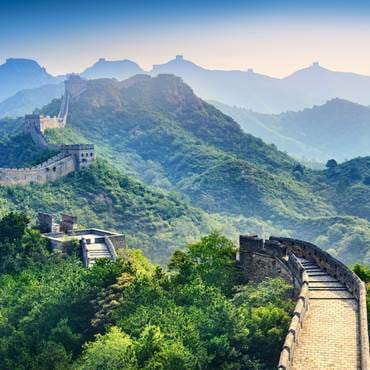
China
China, known as the People's Republic of China, is found in East Asia with a population of circa 1.428 billion in 2017. China's history is rich with art, politics, science, and philosophy. It is home to the oldest of the major world civilisations. China was ruled by various dynasties for much of its history. It is one of the world's four ancient civilisations and the written history of China dates back to the Shang Dynasty (c. 1600–1046 BC), over 3,000 years ago. The Han Dynasty, which lasted over 400 years from 206 BC to 220 AD, was one of the most influential in China's history.
Reputedly 5500 miles (8850 km) long, The Great Wall is considered one of the wonders of the world and is China’s number one tourist attraction. The Great Wall of China is the collective name of a series of fortification systems generally built across the historical northern borders of China to protect and consolidate territories of Chinese states and empires against various nomadic groups of the steppe and their polities. Several walls were being built from as early as the 7th century BC by ancient Chinese states, and selective stretches were later joined together by Qin Shi Huang (220–206 BC), the first Emperor of China. Little of the Qin wall still remains. Later on, many successive dynasties have built and maintained multiple stretches of border walls. The most well-known sections of the wall were built by the Ming dynasty(1368–1644).
China’s rich heritage, ancient culture and diverse history make it one of the world’s most fascinating travel destinations.
 GB
GB
 US
US



